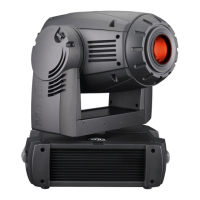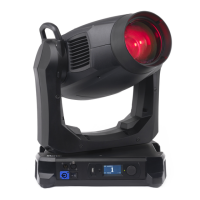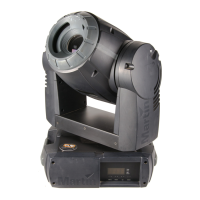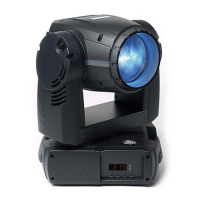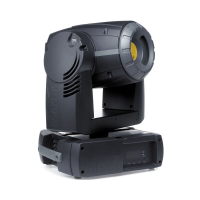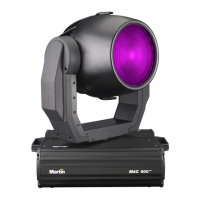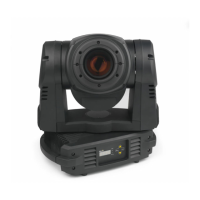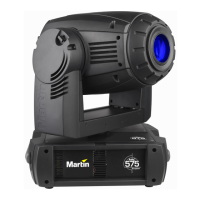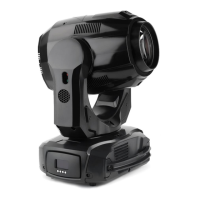Control panel 15
Firmware version
INFO/VER displays the version number of the installed firmware. The firmware version is also displayed briefly at
startup.
DMX
The DMXL menu shows the DMX start code (STCO) and DMX values received for each effect.
Service messages
The Service LED on the control panel lights under conditions that require fixture service, and there is a message
describing the service required. To display the message, select
SMSG in the main menu. This item is available only
when the LED is lit. There are two service messages.
Replace lamp is displayed when the lamp counter exceeds 750 hours, which is the rated average life for the
HMI 1200 W/S lamp. The maximum service life is 125% of the average life, or 940 hours.
Fixture overheating is displayed when the head temperature exceeds 120° C (248° F). Overheating is
likely due to dirty air filters, fans, or air vents; incorrect power supply settings, or a defective fan.
Service utilities
Important! Enter must be held for several seconds to access the utilities menu.
Test sequences
TSEQ provides a general test of all effects that can be run without a controller. UTIL/PCBt provides routines
for circuit board testing that are for service use only.
Feedback toggles
An on-the-fly position correction system monitors the color wheel, gobo wheels, gobos, rotating effects, and effect
wheel. If a position error is detected, the shutter closes while the effect resets. This feature can be disabled by turning
effects feedback (
UTIL/EFFb) off.
The automatic pan/tilt position correction system may be temporarily turned off under UTIL/FEbA. The off
setting, however, is not saved and the system will be re-enabled the next time the fixture starts. If the system cannot
correct the pan/tilt position within 10 seconds, feedback is automatically disabled.
Adjustment
The adjustment menu (UTIL/Adj) provides manual control for making mechanical adjustments. See page 34.
Calibration
The calibration menu (UTIL/CAL) provides utilities to define offsets in software that are relative to the
mechanical reset or home positions. This allows you to fine tune optical alignment and achieve uniform performance
between fixtures. Dimmer and zoom are calibrated to defined points. The other effects are calibrated relative to an
arbitrary reference fixture.
Default offset settings may be restored by selecting default offsets (
UTIL/dFOF).
C
ALIBRATING
EFFECTS
1 Apply power but do not strike the lamp until zoom has been calibrated.
2 To calibrate zoom, first remove the bottom head cover. Select
UTIL/CAL/ZOOF and press [Enter].
Adjust the offset until the face of the zoom lens plate is flush with the back edge of the focus plate (Figure
12). Press [Enter] to save the setting. Replace the bottom head cover.

